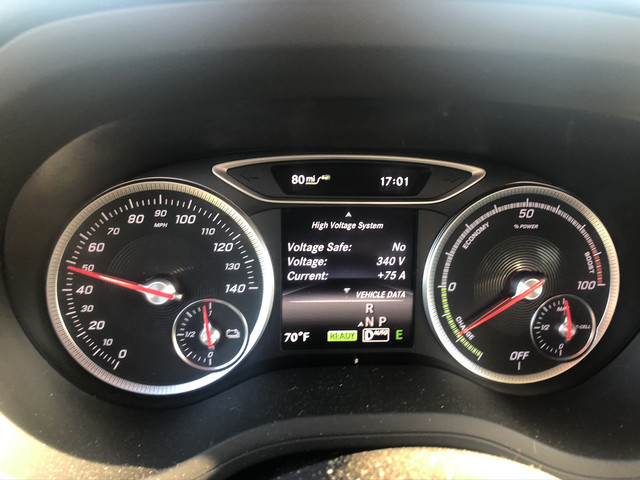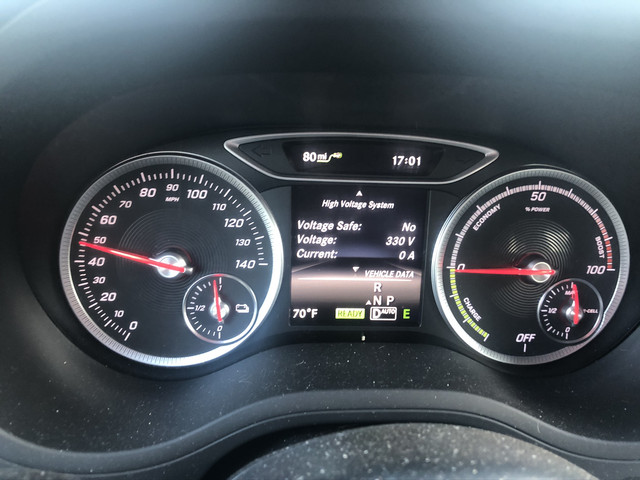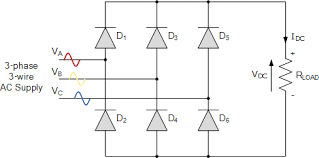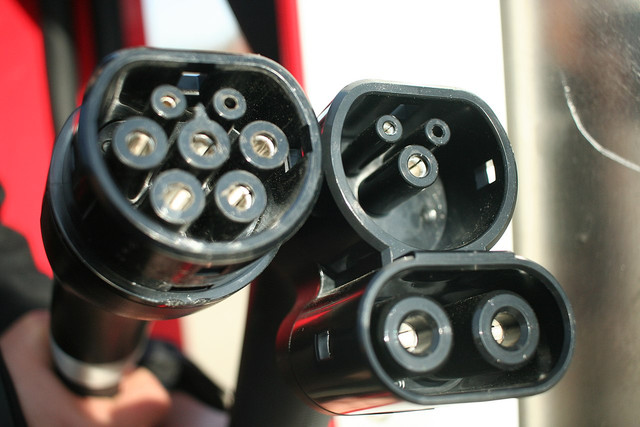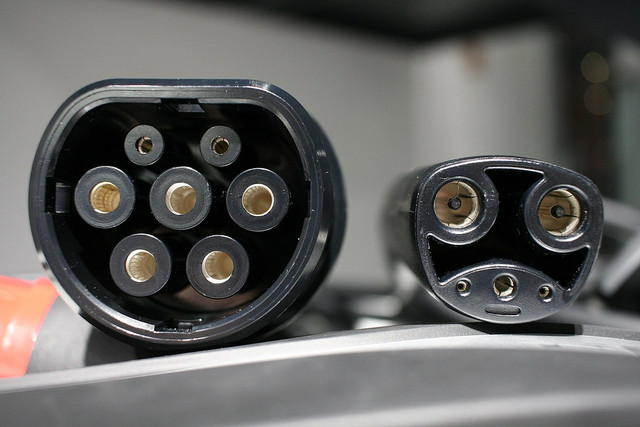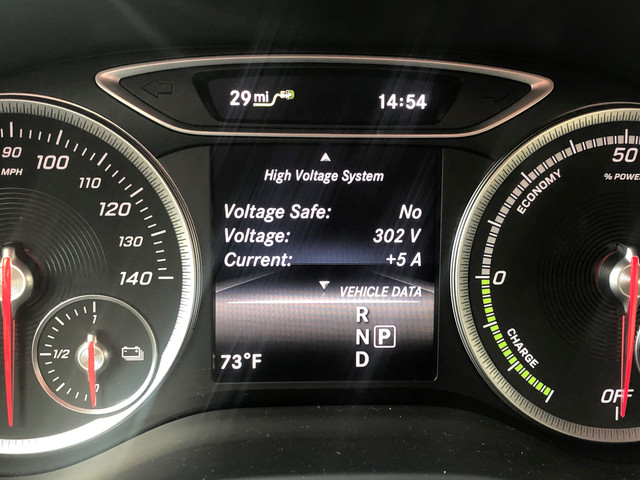FordAnglia
Well-known member
- Joined
- Jul 30, 2019
- Messages
- 185
Greetings,
I'm bored during my daily commute. I use the time behind the wheel, while traveling in heavy traffic on both side streets and in the HOV lane, to explore the B250e. Recently I discovered the "Hidden Menu" thanks to Cardonman and my follow up post.
Yesterday I was able to see the charging voltage and current while on an L2 charger.
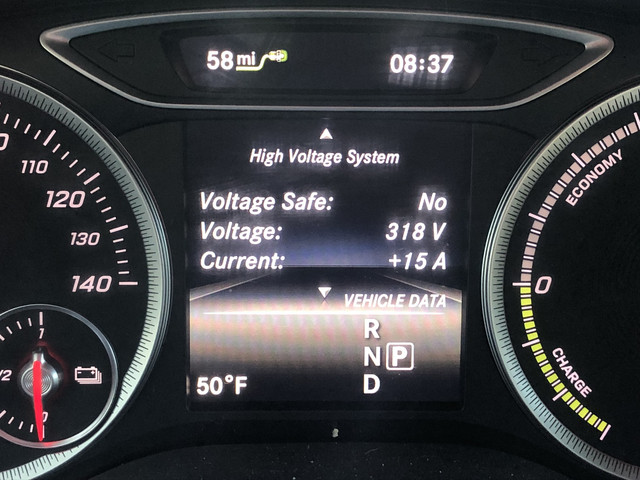
The L2 EVSE at work (ClipperCreek) doesn't connect to my iPhone (the public ChargePoint equipment does) so I don't know the charger power level.
From the vehicle display we have 318V and +15A, or 4.77kW - this is DC at the vehicle's high-voltage battery. The (+) means current flowing into the battery.
The numbers are lower than I was expecting. Shouldn't the L2 charger be 6.6kW? AC input of 32A at 208V. When I returned to the vehicle it was fully charged, and current fell to 0A. I'll repeat this experiment next time I'm on the "high power" L2 charger at work.
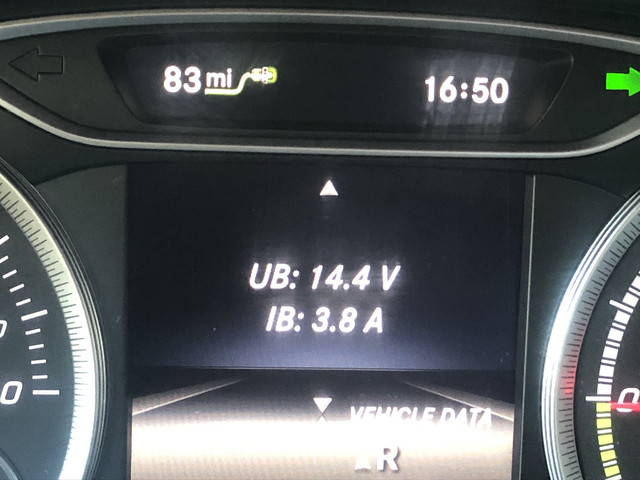
The vehicle also displays the 12V battery data. A lead-acid (ordinary "car battery") requires 14V to charge.
Oops - Can't post more than two PIX here, need to make a reply post to upload the next PIX.
I'm bored during my daily commute. I use the time behind the wheel, while traveling in heavy traffic on both side streets and in the HOV lane, to explore the B250e. Recently I discovered the "Hidden Menu" thanks to Cardonman and my follow up post.
Yesterday I was able to see the charging voltage and current while on an L2 charger.

The L2 EVSE at work (ClipperCreek) doesn't connect to my iPhone (the public ChargePoint equipment does) so I don't know the charger power level.
From the vehicle display we have 318V and +15A, or 4.77kW - this is DC at the vehicle's high-voltage battery. The (+) means current flowing into the battery.
The numbers are lower than I was expecting. Shouldn't the L2 charger be 6.6kW? AC input of 32A at 208V. When I returned to the vehicle it was fully charged, and current fell to 0A. I'll repeat this experiment next time I'm on the "high power" L2 charger at work.

The vehicle also displays the 12V battery data. A lead-acid (ordinary "car battery") requires 14V to charge.
Oops - Can't post more than two PIX here, need to make a reply post to upload the next PIX.







